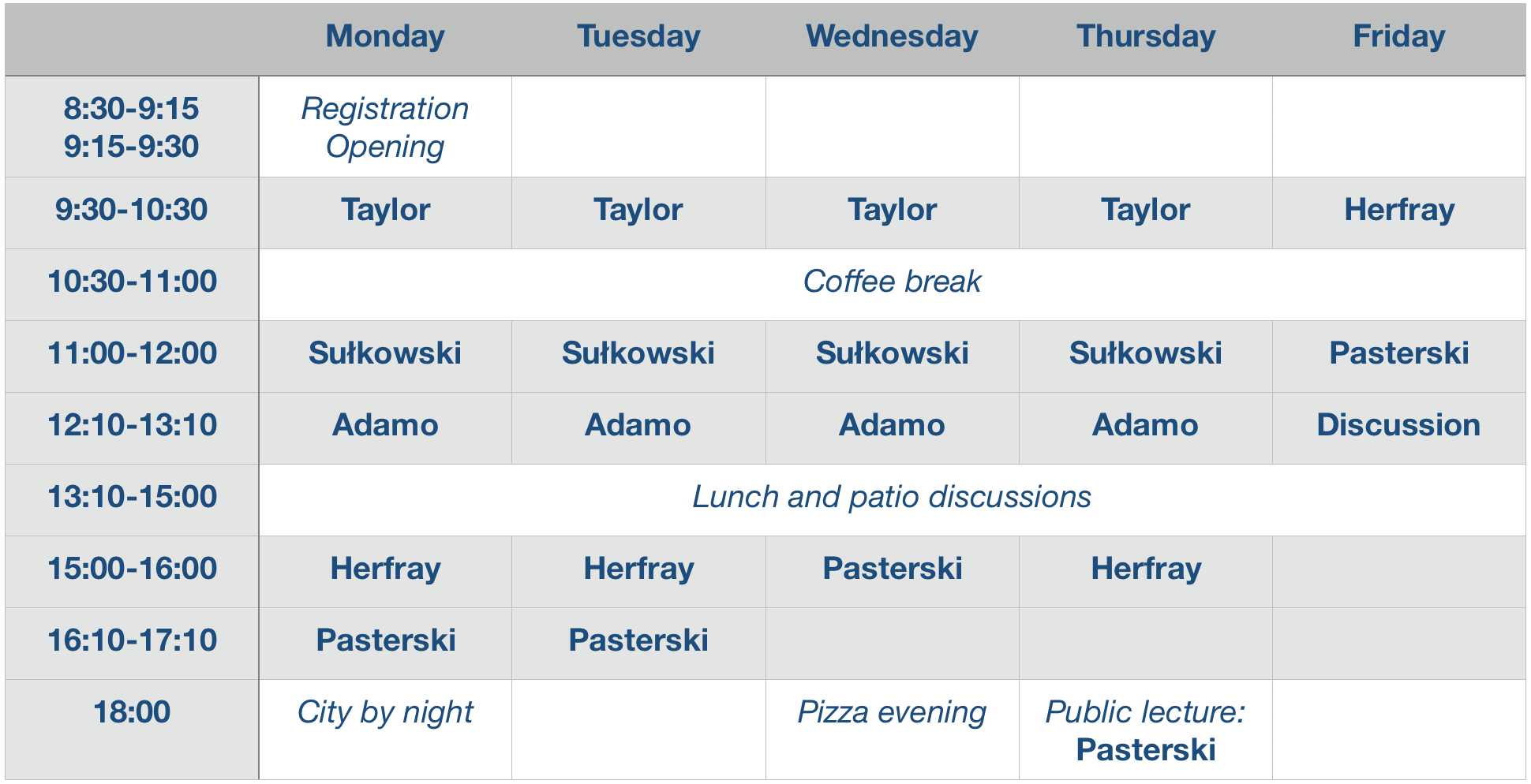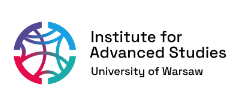Program
Advanced school on asymptotically flat spacetime and celestial holography will take place at the Faculty of Physics, University of Warsaw, from August 28 to September 1, 2023.
Celestial holography employs the framework of two-dimensional (quantum) conformal field theory on the celestial sphere in order to imprint our four-dimensional world on a two-dimensional hologram. It is based on exact mathematical equivalence of soft theorems in QFT with asymptotic symmetries and memory effects in general relativity. This “infrared triangle” offers new insights into quantum gravity and its connections to the standard model of particle physics.
The school will consist of five series of lectures and interactive learning sessions. Each series will consist of four lectures covering the foundations of celestial holography. The school is intended for graduate students, but advanced undergraduates and postdocs entering this rapidly developing research area will also profit from pedagogical lectures and interactive learning sessions.
Lecture series
Tim Adamo (University of Edinburgh)
Title: Introduction to Twistor Theory
Yannick Herfray (Institut Denis Poisson, Université de Tours)
Title: Symmetries of Asymptotically Flat Spacetime
Sabrina Pasterski (Perimeter Institute)
Title: Elements of Celestial Holography
Piotr Sułkowski (University of Warsaw)
Title: 2d Conformal Field Theory
Tomasz Taylor (Northeastern University and University of Warsaw)
Title: Amplitudes and Soft Theorems
Public lecture
Sabrina Pasterski (Perimeter Institute)
Title: The Celestial Hologram: From Stargazing to Quantum Gravity and Back
Abstract: The holographic principle suggests that the laws of physics governing our universe can be explained by a simpler, equivalent theory defined on the edge of spacetime. However, its realizations in String Theory are associated with a type of universe that doesn’t resemble ours. Recent advancements that leverage infrared physics have helped us apply this principle to spacetimes that look more like our own, giving us new symmetries that constrain the relevant laws of physics. Celestial Holography proposes that our universe can be understood as a projection on the night sky. This new approach involves an exciting collaboration of researchers from various subfields: from quantum field theory, to mathematical physics, and quantum gravity. This talk will explore how our age-old fascination with the night sky merges with cutting-edge advancements in our understanding of quantum gravity.
Date: August 31, 18:00
This public lecture is also a lecture in the “Zapytaj fizyka” series – here is the lecture website.
Lecture notes, recordings and reading lists
Tim Adamo
Lecture 1 – Lecture 2 – Lecture 3
Adamo: https://arxiv.org/pdf/1712.02196.pdf
Elvang, Huang, chapter 2 from: https://arxiv.org/pdf/1308.1697.pdf
Yannick Herfray
Lecture 1 – Lecture 2 – Lecture 3 – Lecture 4
Geroch: https://link.springer.com/chapter/10.1007/978-1-4684-2343-3_1
Madler, Winicour: https://arxiv.org/abs/1609.01731
Adamo, Kozameh, Newman: https://link.springer.com/article/10.12942/lrr-2009-6
Ashtekar: https://arxiv.org/abs/1409.1800
Sabrina Pasterski
Strominger, chapter 1 from: https://arxiv.org/pdf/1703.05448.pdf
Pasterski, Pate, Raclariu: https://arxiv.org/pdf/2111.11392.pdf
Pasterski: https://arxiv.org/pdf/2108.04801.pdf
Piotr Sułkowski
Ginsparg: https://arxiv.org/abs/hep-th/9108028
Cardy: https://arxiv.org/abs/0807.3472
Belavin, Polyakov, Zamolodchikov: https://www.sciencedirect.com/science/article/pii/055032138490052X?via%3Dihub
Di Francesco, Mathieu, Senechal: https://link.springer.com/book/10.1007/978-1-4612-2256-9
Polchinski, relevant parts of: https://www.cambridge.org/core/books/string-theory/30409AF2BDE27D53E275FDA395AB667A#
and https://www.cambridge.org/core/books/string-theory/2D456468D20AA8A9CE10CEB08B95B9DC
Tomasz Taylor
Taylor: https://arxiv.org/pdf/1703.05670.pdf
Taylor: https://pcts.online/s2.pdf
Organizing committee
- Zygmunt Lalak
- Jerzy Lewandowski
- Sabrina Pasterski
- Piotr Sułkowski
- Tomasz Taylor
Schedule

The lectures are broadcasted on Zoom.
Information for participants
Registration
In order to register, you should submit the following form.
Registration deadline: June 15, 2023.
In case you would need some financial support, please tick an appropriate box in the registration form and ask a senior scientist (e.g. your supervisor) to send a recommendation letter to psulkows [at] fuw.edu.pl, with “[Your name] – Celestial 2023, support” in the title of the message.
Location & contact
Faculty of Physics, University of Warsaw
ul. Pasteura 5, 02-093 Warsaw, Poland
https://www.fuw.edu.pl/faculty-of-physics-home.html
The lectures will take place in lecture hall 0.06, in the ground floor of the Faculty of Physics.
Travel & transport
Warsaw Chopin Airport – the main airport serving Warsaw. It is located within the city limits, 10 km from the city center, which you can easily reach by a few city buses, a train line, and a taxi.
Warsaw Modlin Airport – another airport, mainly serving budget airlines, located 35 km from the city . It takes around 50 minutes to get to the city center, either by bus and train or a taxi.
Warszawa Centralna Railway Station – the main railway station located in the city center, also serving international trains.
Public transport in Warsaw – the city has a vast transportation network, which includes buses, metro, and trams. You can buy tickets for a single trip (up to either 20 or 75 minutes, with transfers allowed), or multi-day tickets.
Warsaw Public Bike – one of the largest urban bike systems in Europe. It is a good complement to public transport in Warsaw and allows quick navigation through our city. You can register and use at little or (for short enough rides) no cost.
Accommodation
Here are some (relatively) nearby hotels in which participants might choose to stay. For more options you can check Google maps, booking.com, etc.
Hera – guesthouse of the University of Warsaw (budget option)
Ibis budget Warszawa Reduta (*)
Ibis Warszawa Reduta (***)
Campanile Warszawa (***)
MDM Hotel (***)
Radisson Blue Sobieski (****)
Polonia Palace (****)
Acknowledgements




